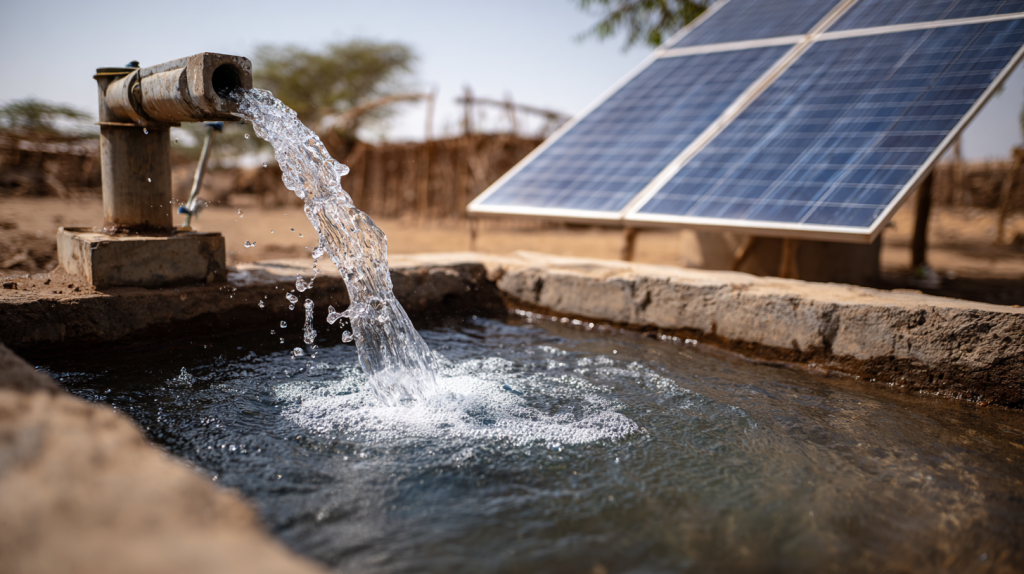
Bringing Clean Water Within Reach: Real-Life Wins in Developing Nations
Clean, safe water feels like a basic right. Yet millions of people still walk long distances every single day just to find a drink that will not make them sick. The good news is that solutions are spreading faster than ever. Across developing nations, clever ideas, determined community leaders, and global collaboration are making real breakthroughs. Progress is happening quietly in villages, schools, farms, and busy towns. It deserves a spotlight.
Solar-powered water systems lighting up communities
In places where electricity is unreliable, solar-powered pumps are a lifesaver. Rural communities in Kenya (such as Turkana) have been installing solar powered boreholes that bring groundwater straight to homes and schools. For example, in Kenya’s arid regions, solar pumps are providing sustainable water sources and enabling residents to embrace farming amid worsening droughts.
According to one project near Homa Bay county, five solar powered water pumps now serve 700 households across seven villages – reducing long water-collection walking, and replacing diesel generators with solar batteries.
These systems replace hand-pumping or long daily walks with a steady, low-cost supply. Maintenance costs are small and the sun is about as dependable as it gets. Teachers in rural districts report improved school attendance since children are spending less time collecting water and more time in the classroom.
Community-led filtration stations
Rather than shipping bottled water or relying only on charity, some regions have adopted a more sustainable model: village run filtration kiosks. In Bangladesh, one project by Swisscontact supports the delivery of over 16 million litres of clean drinking water to more than 17,000 people through nine local kiosk enterprises so far.
These kiosks use simple but effective filtration technologies like reverse osmosis (RO), UV purifiers or activated carbon filtration. The benefit is double: people get clean water and the community builds skills, capability and pride.
When locals operate the systems they stay running longer and serve more people. These kiosks also offer mobile refill models and water-rickshaw delivery, showing how smart distribution meets need.
Household filtration programs
Not every home needs a giant system. In Cambodia and other parts of Southeast Asia, government and NGO partnerships have supported families to install small point-of-use filters. The social enterprise Hydrologic (also known as Tunsai Water) in Cambodia has sold more than 450,000 filters benefiting over 2 million Cambodians.
These ceramic or biosand filters are reported to remove as much as 99.9% of bacteria from water and can produce up to 30 litres of clean water per day.
Families often report a noticeable drop in diarrheal illness within months. It sounds simple, but a small device on a kitchen shelf can change a child’s life expectancy.
Smart financing and micro-loans
Access is not only about technology. In parts of Uganda and Indonesia, microfinance programs are helping households afford water tanks, rainwater catchment systems and sanitation upgrades. While I don’t have a specific country example in this article, studies show that when households take small loans and repay them over time, infrastructure grows more naturally and ownership increases.
Clean water becomes a household investment, not a lucky hand-out. For instance research in Bangladesh slum areas found a large proportion of households are willing to pay to improve water and sanitation facilities.
Education and women’s leadership
Clean water initiatives work best when the community leads. Women, who traditionally shoulder water collection duties, are stepping into leadership roles in water committees from Malawi to Sri Lanka (and other areas). They organise maintenance, ensure fair access, and educate households about hygiene and safe storage.
When women guide the system, the benefits ripple into child health, school attendance and economic opportunities.
Innovation is flowing
From solar pumps to clay filters, from micro-loans to local leadership, the movement toward safe drinking water is gaining momentum. It is not perfect and there is still a long way to go. Yet each successful project proves what is possible when creativity meets compassion.
Imagine a village where young children don’t have to skip school to fetch water. Imagine women who used to spend hours carrying heavy buckets now teaching others about hygiene and hygiene practices. Imagine farmers who used to watch crops die from drought now irrigating vegetables and selling produce. These are not dreams – they are real-life changes happening now.
Clean water should not be a luxury. Thanks to bold ideas and everyday heroes, we are moving toward a world where every community can turn on a tap with confidence. If progress keeps flowing this way, the next generation may grow up wondering how clean water was ever out of reach in the first place.
